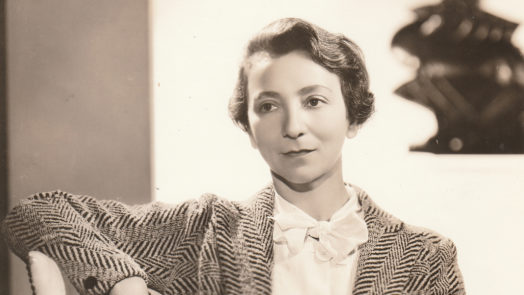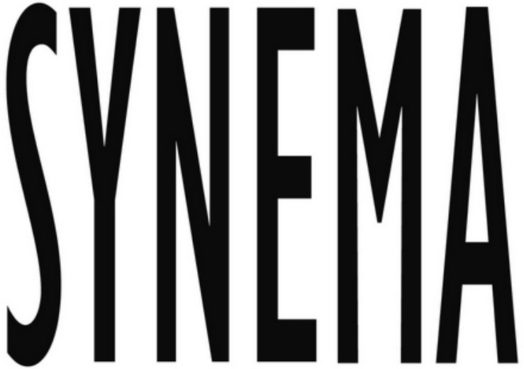| Film History | 3 x Mädchen in Uniform |
Leontine Sagan, Christa Winsloe, and a film classic with consequences
By Brigitte Mayr und Michael Omasta

Leontine Sagan1934_Sammlung: filmexil@synema.at
Three rigidly run educational institutions: the Prussian Kaiserin-Augusta-Stift in Potsdam, a Catholic convent school in Mexico, a German boarding school for officers’ daughters. Three young orphans who are quasi trapped in these institutions of authoritarian coldness and develop romantic feelings for a young governess. Three versions of the same story, three films: the first, a worldwide success from Weimar cinema; the second, an almost forgotten exile film by German emigrants in Mexico; the third, a remake from West Germany in the late 1950s that was underrated for many years. 3 x Mädchen in Uniform is certainly the first opportunity to see the three versions from 1931, 1951, and 1958 on the big screen and compare them.
The spectacular starting point of this series, Mädchen in Uniform from 1931, was the exception to the rule in several respects in its day: directed by a woman (Leontine Sagan), written by a woman (Christa Winsloe), and filmed exclusively with women in the leading roles. It was made on the fringes of industrial film production as a production of the Deutsche Filmgemeinschaft; all those involved received only minimum pay, but shared in the box-office takings.
As extraordinary as this first film is, so, too, are the biographies and careers of those who made it. Leontine Sagan was born Leontine Schlesinger in Budapest (then Austria-Hungary) in 1889; the fiftieth anniversary of her death will be celebrated in May 2024. Her mother, Emma Fasal, belonged to Vienna’s Jewish bourgeoisie; her father, Isidor Schlesinger, was a mining engineer in the diamond fields of South Africa. Leontine grew up with her siblings in Vienna, Budapest, and Johannesburg, where she worked as a secretary in the consulate. At the age of 21, she traveled back to Europe and attended Max Reinhardt’s acting school in Berlin. This is followed by engagements in Bohemia, Dresden, and at the Neue Wiener Bühne. From 1916, she expanded her previous repertoire at the Schauspielhaus Frankfurt to include classical dramatic (leading) roles. In addition, she gave lessons at the associated theater school, and—still quite unusual for a woman at the time—also began directing.
Unfulfilled Expectations
At the beginning of 1931, Leontine Sagan staged the play Gestern und Heute in Berlin and filmed it that same year under the title Mädchen in Uniform. Christa Winsloe, the author of the theater version, worked closely with Sagan on preparing the screenplay. The international success of the film should have opened up a world career for both women, but these expectations were not fulfilled.
The following year, the director shot Men of Tomorrow in England for the film producer Alexander Korda, a satire on chauvinist scientists in Oxford, which is now considered lost; she then traveled to Hollywood and sounded out projects with David O. Selznick, but no more films were made. In 1934, she returned to London without having achieved anything and continued her work in the theater, staging anti-Nazi plays and operetta productions and toured the English provinces with the successful play Murder in Mayfair.
In the same year, Christa Winsloe, whose books had been burned in Germany, also tried to gain a foothold in Hollywood. She had contact with the director Dorothy Arzner, then traveled to New York where she wrote for Harper’s Bazaar, and ultimately settled down in France. She worked on the screenplay for G.W. Pabst’s Jeunes filles en détresse (Girls in Distress) in Paris in 1938; it is her final encounter with the film industry. In 1944, she and her partner, the Swiss translator Simone Gentet, are murdered by the French as alleged collaborators.
On Four Continents
In 1947, Leontine Sagan returned to the distant land of her childhood together with her husband Victor Fleischer, the Viennese founder and former director of the Frankfurter Verlagsanstalt. In South Africa, she is given the opportunity to use her experience and talent to train actors, and in the 1950s—in addition to her work as an impresario and director—she played a key role in establishing a national theater organization. To this day, she is revered in South Africa as a pioneer of modern stage culture and acting. Sagan died in Pretoria in 1974. She proudly wrote her moving memoir Licht und Schatten. Schauspielerin und Regisseurin auf vier Kontinenten, “as a Jew and emigrant.”
Apropos. Last but not least, the three films recall the many artists banished by the Nazis who were involved in the different versions of Mädchen in Uniform: apart from Sagan (GB, US, ZA) and Winsloe (US, FR), these are also the actors Hertha Thiele (CH), Erika Mann (CH, FR, US), Hedwig Schlichter (FR, AR), Therese Giehse (BE, LU, CH), Blandine Ebinger (US), Lilli Palmer (GB, US), Ellen Schwanneke (AT, CH, US), and Immy Schell (CH). In addition, the cutter Oswald Hafenrichter (FR, GB), screenplay authors Franz Hoellering (CZ, US) and Egon Eis (FR, CU), production manager Frank Wysbar (US), producers Artur “Atze” Brauner (SU) and Rudi “Rodolfo” Loewenthal (FR, CU, MX), as well as the director Alfredo B. Crevenna (MX).
Mädchen in Uniform is currently considered a classic—and not just of lesbian cinema. What Sagan once summed up can still be felt today: “In this ensemble, which was comprised principally of women, a solidarity and enthusiasm prevailed, which carried over to the screen.” The story of the chaste yet forbidden love between the boarding school pupil Manuela and the governess she adored, stays with us far beyond the end of each film.
A Diagonale Special by filmexil@synema.at




